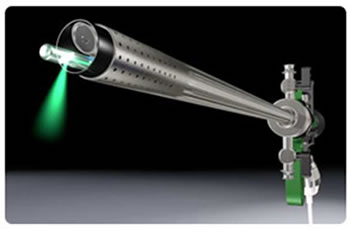Prostate matters is a not for profit organisation committed to providing free information about prostate issues from leading Clinical Authorities.
Treatment of Benign Prostatic Hyperplasia -Greenlight laser vaporisation

Overview by Professor Richard Hindley
Consultant Urological Surgeon
Hampshire Hospitals NHS Foundation Trust
Chair of the Get It Right First Time (GIRFT)
BPH Academy
National Clinical Improvement Program

And
Mr Feras al Jaafari
Consultant Urological Surgeon
Queen Margaret Hospital
Dunfermline Hospital
NHS Fife

When the symptoms from BPH moderate to severe, unresponsive to medication or medication is having unwanted side effects, then the standard next step is to consider procedures that aim to create as wide a passage as possible though the prostate gland. As described earlier, there are several minimally invasive procedures including Grrenlight laser prostate surgery.
There are several different types of laser treatment available including Greenlight laser PVP (Photoselective vaporisation of the prostate), Holmium laser enucleation of the prostate (HoLEP) and the Thulium laser which may be used to vaporise or enucleate. We are very experienced using the Greenlight laser system produced by Boston Scientific, having performed more than 1500 cases over the last 10 years or more.
Laser vaporisation, or vapoenucleation is suitable for prostates up to 150ml in volume. For larger prostates, anatomical enucleation is required. That is using the laser beam to cut away pieces of the unwanted tissue.
Anatomical enucleation of the prostate is independent of the energy source, and recently Greenlight laser has been used for enucleation (GreenLEP) in a few centers in Europe, and recently in the UK.
Greenlight laser treatment of BPH.
Greenlight laser PVP is usually performed under a general anaesthetic and involves a sheath and telescope being passed down the water pipe to the prostate. A laser fibre is then passed down the sheath and the laser energy delivered under direct vision to vaporise away prostate tissue to create a wide passage through the prostate.
The specific advantages of utilizing laser energy rather than a traditional electrosurgical TURP are:
- A decrease in the relative blood loss during the procedure, eliminating the risk of blood transfusion
- Significant decrease in the risk of post-TURP hyponatremia or *TURP syndrome
- The ability to treat large prostate glands up to 150ml
- Being able to treat patients who are actively being treated with anti-coagulation therapy for unrelated illnesses
- Much quicker removal of urinary catheter (drainage tube) – usually overnight
- Much shorter hospital stay – day-case or single night stay in hospital
- Less risk of erectile dysfunction than with TURP (1-2% verses 5-10% with TURP
- Less risk of retrograde, ‘dry’, ejaculation (>75% with TURP, 25-50% with laser based treatments)
A recent muticentred pan-european study of greenlight laser treatment compared to TURP concluded that ‘Follow-up at one year demonstrates that photoselective vaporization of the prostate produced similar efficacy outcomes compared to TURP. The complication free rates and overall reintervention rates were comparable between treatment groups’.
*TURP Syndrome: Hyponatremia resembles a stroke and is caused by an overload of fluid absorption from the open prostatic sinusiods during the procedure. This complication can lead to confusion, changes in mental status, vomiting, nausea, and even coma. To prevent TURP syndrome the length of the procedure is limited to less than one hour in many centres, and the height of the container of irrigating solution above the surgical table determining the hydrostatic pressure driving fluid into the prostatic veins and sinuses is kept at a minimum.

Prostate matters is a not for profit organisation that is committed to providing free expert advice about prostate issues from leading Clinical Authorities
PROSTATE MATTERS
Copyright Disclaimer: We try to acknowledge copyright as appropriate. If we have used something without acknowledging copyright, this is inadvertent. Please let us know by emailing info@prostatematters.co.uk
Site design and technical development by Webtoys | Intelligent Digital Media

